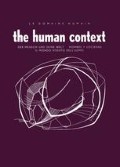Abstract
No one can remain unaware of the strange and somewhat shocking appearance of new social phenomena identified as the generation gap. Rebellion of younger persons against the establishment is a problem that has existed probably since the beginning of time. Freud in Totem and Taboo suggested that sons always must ultimately destroy the father, namely, the establishment, the power structure. In this way sons become fathers, or in more sexual terms, conquer women for themselves. Rebelliousness of youth against authority has taken many forms. We are addressing ourselves at this point in history, however, to the particular manifestations of anti-establishment, anti-conventionality, individual and group flaunting of the prevailing social order by young men and women massed under the rubric The Hippie Movement in the United States.
Access this chapter
Tax calculation will be finalised at checkout
Purchases are for personal use only
Preview
Unable to display preview. Download preview PDF.
References
Alexander, F. Buddhistic Training as an Artificial Catatonia. In The Scope of Psychoanalysis. New York: Basic Books, 1961, pp. 74–89.
Barr, D. What Did We Do Wrong ? The New York Times Magazine,November 26, 1967, pp. 36 36 et passim.
Bettelheim, B. The Empty Fortress. Infantile Autism and the Birth of the Self. New York: The Free Press, 1967.
Bieber, L, et al. Homosexuality. New York: Basic Books, 1962.
Bingham, J. “The Intelligent Square’s Guide to Hippieland”. The New York Times Magazine,September 24, 1967, pp. 25 et passim.
Bychowski, G. The Archaic Object and Alienation. Int. J. Psychoanal., 48, 1967, 384–393.
Cox, H. God and the Hippies. Playboy,January 1968, pp. 93 et passim.
Focus on the Flower Children: Why All of Us May Be Hippies Someday by Fred Davis. Transaction, December 1967, 9–18;
Hippie Morality: More Old Than New by Bennett M. Berger. Transaction, December 1967, 19–26;
Hippies in College: from Teeny-boppers to Drug Freaks by Geoffrey Simon & Grafton Trout. Transaction,December 1967, 27–32.
Gold, H. The New Wave Makers. Playboy,October 1967, pp. 128 et passim.
Golden, S. A. O. What is a Hippie? A Hippie Tells. New York Times. Tuesday, August 22, 1967, p. 36.
Griffin, S. Oriental Psychiatry Veering West. Science News, 92, September 9, 1967, pp. 254–255.
Hesse, H. Siddhartha. New York: New Directions, 1951.
Hesse, H. Steppenwolf, New York: The Modern Library, 1929.
Keniston, K. The Uncommitted Alienated Youth in American Society. New York: Harcourt, Brace & World, 1966.
Lukas, J. A. The Two Worlds of Linda Fitzpatrick. New York Times, Monday, October 16, 1967, PP. I, 53.
Marmor, J. Ed. Sexual Inversion. New York: Basic Books, 1965.
McLuhan, M. Understanding Media: The Extensions of Man. New York: Signet Books, 1966.
Mowrer, O. H. Ed. Morality and Mental Health. Chicago: Rand McNally, 1967.
Trouble in Hippieland. Newsweek,October 30, 1967, pp. 84 et passim.
Richman, R. Happy Hippie Hunting Ground. Life, December 1, 1967, pp. 66–71.
Rusk, H. A. Hallucinogenic Drugs: I. New York Times, Sunday, October 22, 1967, p. 70.
Rusk, H. A. Hallucinogenic Drugs: II. New York Times, Sunday, October 29, 1967, p. 74.
Shorris, E. Love is Dead. The New York Times Magazine. October 29, 1967, pp. 21 et passim. The Hippies. Philosophy of a Subculture. Time,July 7, 1967, pp. 18 et passim.
Author information
Authors and Affiliations
Rights and permissions
Copyright information
© 1969 Springer Science+Business Media Dordrecht
About this chapter
Cite this chapter
Schwartz, E.K., Leder, R. (1969). The Hippie or What Makes Groovy Tick?. In: Le Domaine Humain / The Human Context. Springer, Dordrecht. https://doi.org/10.1007/978-94-015-2745-3_12
Download citation
DOI: https://doi.org/10.1007/978-94-015-2745-3_12
Publisher Name: Springer, Dordrecht
Print ISBN: 978-94-015-1617-4
Online ISBN: 978-94-015-2745-3
eBook Packages: Springer Book Archive

